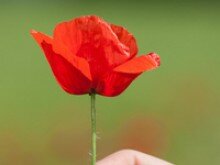Modernism and Beyond
In this interview with Makarand Paranjape, K. Satchidanandan talks about issues as diverse as subaltern politics and style, sound and sense, Marxism and spirituality – and how he is still old-fashioned enough to believe in the power of inspiration.
Makarand Paranjape: Could you tell me something about your beginnings as a poet?
K. Satchidanandan: Poetry came to me quite early in life though I cannot tell from where it came: from proverbs or folksongs, leaves or rain, or from that solar radiance of the Ramayana that was perhaps the first experience of poetry in my life. My wild and untamed fancies sought articulation in the pages of the school and college magazines. I began to publish in regular periodicals. During my undergraduate days the kind of poetry we were writing was considered difficult. Only little magazines – the ones like M. Govindan’s ‘Sameeksha and Ayyappa Paniker’s Kerala Kavita – came to our help. It was a real struggle in the initial years: we had to fight the old sensibility which we did through discussions, public readings, little publications, analytical studies, re-evaluations of our predecessors and, of course, translations from modern world poetry as well as contemporary Indian poetry, in all of which I had a vital role to play. Slowly the circle of readers of modern poetry swelled, especially among the youth, even though the conservatives refused to acknowledge our presence. It took more than a decade for us to become the mainstream of poetry in Malayalam. But by then modern poetry had begun to redefine itself . . .
MP: You are one of the pioneers of modern poetry in Malayalam. How did the movement start?
KS: Modernism emerged visibly in Malayalam only in the 1960s, much after Mardhekar in Marathi, Adiga in Kannada and Muktibodh in Hindi had already transformed the poetic sensibility in their languages. In Malayalam it was the product of a struggle on two fronts: it rejected the clichés of romantic poetry while it also fought the simplifications of the so-called progressive poetry that revelled in rhetoric and mechanically reproduced the known truth of politics. Modernism had its beginnings in poets like N.V Krishna Variyar, but became self-conscious only with poets like Ayyappa Paniker, N.N. Kakkad and Attoor Ravivarma, who had a decisive influence on my generation. By the mid-sixties, we had also acquainted ourselves with the European voices who fascinated us more than T.S. Eliot who had deeply impressed the previous generation. In the first phase of modern poetry, the focus was on style: we were striving to evolve an idiom that would best express the experience of modernity that in India co-existed with tradition. This explains the re-interpretation of myths and the re-deployment of archetypes in the first phase. Ayyappa Paniker’s Kurukshetram (1960) was thus very typical.
MP: What about the second phase?
KS: It was in the seventies that a break came: my reading, observation, thought and a few important friendships led me towards the radical left in Kerala. My commitment was more of a moral nature than political. I shared its indignation and its passion for social justice and chose to associate myself with its cultural front. It was a natural movement from angst to choice. Most of the radicals shared the modernist frustration and disillusionment with the system that also included the orthodox left. Their sensibility was also more contemporary. The ‘status-quo’-ist progressive literature was inane, and the ‘status-quo’-ist modernism was morbid. We found our counterparts in Latin American and African poetry, as well as that of the European left. I translated Neruda, Vallejo, Lorca, Eluard, Brecht, Enzensberger, Senghor, Diop and others. Little magazines mushroomed around, campuses were alive with poetry readings, and streets burst into life with street-plays. I travelled all over the state, reading in campuses, workers’ colonies and even in market places. People’s response was like those of the Chilean workers to Neruda’s poetry: we may not entirely understand your poetry, but we know you are a poet. My poetry as well as that of my fellow poets moved from the lyrical towards the dramatic. It was no more monologic. A new kind of dynamic and virile prose became the chief vehicle of poetry; images grew more energetic and even aggressive. It was leftist, but modern. It was social, but had an existential, introspective dimension to it, as we were also struggling with ourselves. The Emergency justified our protest, we grew more vocal during the period. But internal dissensions and global changes soon fragmented the movement; each of us was again alone.
MP: How did this affect your thinking and your poetry?
KS: My poetry entered a period of critical retrospection and introspection. I had never abandoned my scepticism even during the heady seventies; I had always been critical of Stalinism. Even now I did not abandon socialism, but grew more critical of the authoritarian tendencies of Marxism itself and more aware of its crucial silences. I began to read Lohia, Gandhi and Ambedkar seriously, lost my faith in violence, and grew more sympathetic towards voluntary gender and eco-movements. Class-reductionism, I found, was the bane of Marxism. My poetry developed in new directions that were more humane, regional and culture-specific. My reading in critical theory also might have helped me arrive at a polyphonic and open concept of poetry.
MP: You seem to have tried every possible form of poetry from the short lyric to the sequence. How do you explain this variety?
KS: Every one of us contains multitudes, and each requires a different form. There are very few forms I have not employed in my poetry, from the pithily ironic to the imagistic and the sequential. I enjoy writing poems where images proliferate (eg. ‘Faces in the Rain’) as also where several metaphors constitute a single image, like the South Indian temple towers (‘My Body, a City’). At times I enjoy a Whitmanesque deployment of proper nouns as in the Delhi poems, ‘House’, where they almost form an inescapable labyrinth. Sound is a major component of my poetry: a quality almost entirely lost in translation. I am no musician but am a great lover of music, having even written poems addressed to MD Ramanathan, Kumar Gandharva, and Mallikarjun Mansoor. I also love to paint in poetry – I have attempted painting myself and have written poems on Salvador Dali, Picasso, Van Gogh and Swaminathan. Another form I enjoy is cycles of sequences that help me go beyond the limitations of the single poem; many such have been inspired by travels like ‘Delhi-Dali’ (on Delhi); ‘Madhyamavati’ (on Madhya Pradesh), ‘Indian Sketches’, ‘Traveller’s Journals’ (on various places in India), ‘Western Cantata’ (Europe), ‘Snow’ (Soviet Union), ‘Northern Cantos’ (China), ‘American Diary’ (USA) or ‘Imperfect’ (Sweden and France). I also love to enter other poets – a kind of transmigration – as in my poems on Paul Celan, Carlos German Belli, Tu-Fu, Ai-Ching, Dhoomil and seven poets of Kerala. Let me tell you these are not very conscious choices, for I am old-fashioned enough still to believe in the power of inspiration – or what Lorca calls ‘duende’ – to synthesise the cerebral, the visceral and the spiritual into a single experience. I appreciate purely cerebral poets like Brecht or Raghuvir Sahay and also visceral poets like Sylvia Plath or Kamala Das, but I would never write like any of them. A poem should be like a man, with a brain and a heart and a soul, all in organic harmony.
MP: Has being in Delhi affected your poetry? After all, you were in Kerala during your formative years.
KS: My relationship with Delhi is one of love-hate; she is the beloved and the slut, Circe, Medusa, Helen, Cleopatra, all in one. The sequence, ‘Delhi-Dali’ sums it all up, the loveless labyrinth, the charm, the squalor. The urban element in my poetry has grown stronger here, but there has also been the negative impact: my feelings for my home state, my language and my rural childhood have also grown more intense here, as expressed in my recent long poem, ‘Malayalam’. My poems on Kabir, Mira, Namdev, Lal Ded and Tukaram too are, in a way, tributes to the great cultures of Northern India. Delhi has given me new themes, new directions. I have no regrets.
MP: I can sense a deep spiritual unease behind and beyond all your social concerns.
KS: I have, in all the phases of my creative life, consistently admired certain authors: Dostoevsky, Kazantzakis, Herman Hesse, Tarashankar, William Blake, Alexander Blake, WB Yeats, Lorca, Neruda, Tagore, Kumaran Asan . . . These writers, even if some of them profess otherwise, have a deep spirituality about them that they combine beautifully with their awareness of man and society. Poets should explore the relationships between man and nature (including the ‘lower’ beings), man and (wo)man, man and himself or herself, man and God or the cosmos, thus carrying their perceptions beyond the colour spectrum of politics and sociology. Our saint poets did precisely this though their subversive, indignant, egalitarian, subaltern spirituality that questioned the man-made order from the point-of-view of a ‘divine’, just order. I am trying to explore this perspective in my series on our saint poets. I have already written poems about Kabir, Mira, Tukaram, Namdev, Basava, Akkamahadevi, Andal and Lal Dedh, each taking up different aspects of the Bhakti view of life. I may write more – on Nanak, Tyagaraja, Baba Farid and Mir Dard, for example. Communalism and casteism cannot be fought with rationalism in India, but only with an enlightened trans-religious spirituality that sides with the oppressed. Gandhi was perhaps the only modern leader who realised it. So much has been revealed. I am still waiting.
Appendix to How To Go To The Tao Temple (Poems), 1998.








